August 10th, 2018
I’m back in the UK now but somehow things seem … different. When I left Heathrow in February it was snowing and around freezing. Now it’s 30+ degrees and all the grass has turned yellow. Weird.
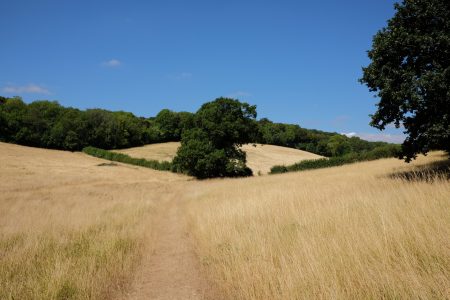
Somewhere near Marlow
Went for a walk the other day between Loudwater and Henley. Just following the Chiltern Way like I did way back in 2011.
I have to admit the new scenery is rather photogenic, and the complete lack of mud is a welcome bonus.
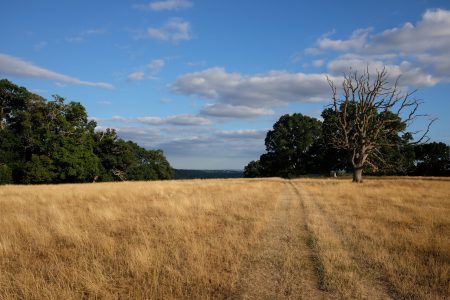
Henley park
August 4th, 2018
I spent a few days in Hong Kong on my way back to the UK. Can’t remember how many times I’ve been here now, feels like a lot…
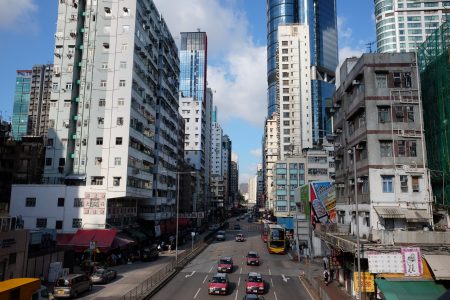
Street in Kowloon
The temperature is about the same as the UK, fortunately all the buildings have air-con.
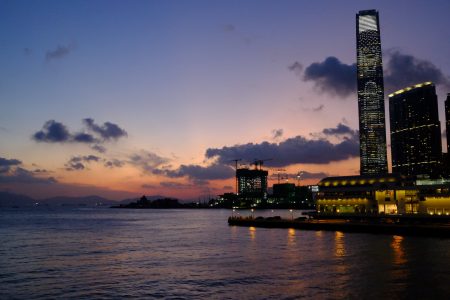
Sunset by the harbour
On the second day it was a bit rainy and cooler which seemed suitable for a little hike. I did this route to Kowloon peak.
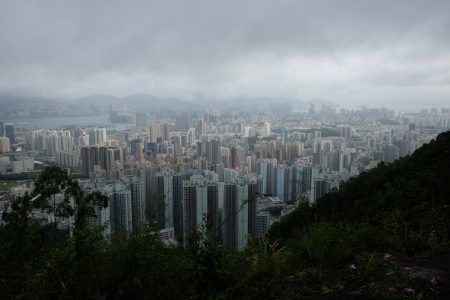
Kowloon in the mist
I wouldn’t really recommend it as it’s mostly just dull road, apart from a brief section where I took the photo above, and once I got to the top everything was hidden by cloud. Reminded me of that time I went hiking in Taipei. Although the information panel below suggests it’s quite scenic here in good weather.
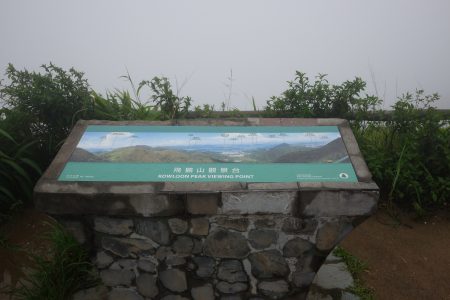
Scenic spot (maybe)
June 19th, 2018
China has a bit of a thing for building extravagant replicas of western landmarks. One I found out about recently is this Paris-alike in the outer suburbs of Hangzhou, complete with Eiffel tower.
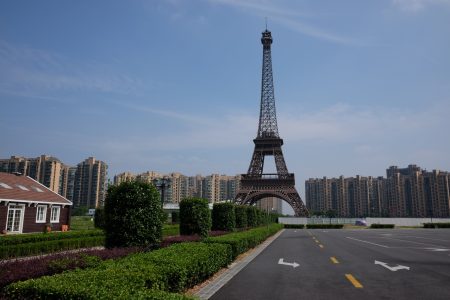
And these residential buildings modelled on the Champs Elysees. I actually rather like it, it transforms what would otherwise be an utterly unremarkable suburb into a mini tourist hotspot. And it’s probably quite fun to live in too.
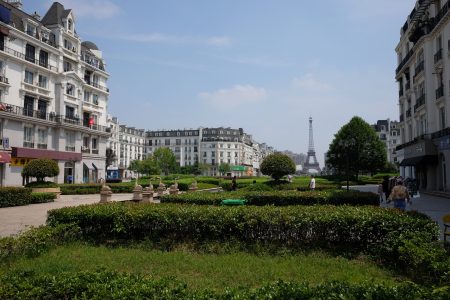
Shanghai apparently has “Thames town” which is modelled on a traditional English market town, so might have to visit that some day too.
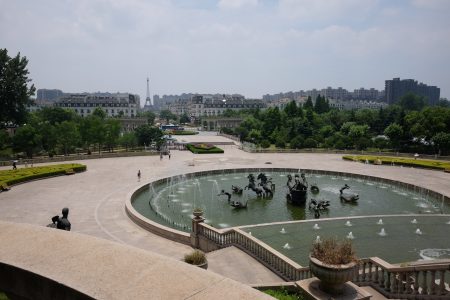
June 3rd, 2018
I’ve discovered something very important about the summer here: every day it’s either 30+ degrees, or raining, or both. This rather limits the potential for outdoor activities so I’ve been going to a lot of museums recently. Which is a shame because I actually found some really good places west of Hangzhou to go hiking.
On Saturday it was raining less than usual and only 20-odd degrees so seemed perfect to go out of a walk. There’s a network of well-maintained paths that connect all the mountain ridges here. An information board said there’s 108km of them, but I got pretty tired after a few hours due to the extreme amount of up-and-down.
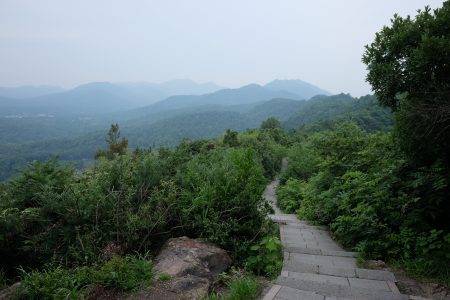
The route I was on links up with the Lingyin temple I visited back in March, so you could take the cable car up/down if you’re feeling lazy.
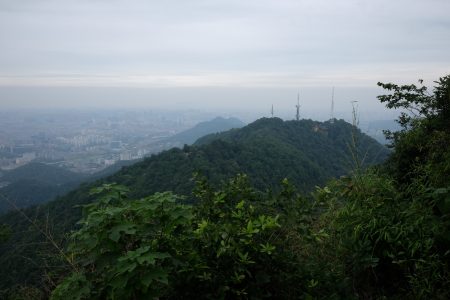
April 19th, 2018
When I went to Wuzhen a few weeks ago I missed the last bus on the final leg of the journey and had to take a taxi. I asked the driver if there was anything interesting in Huzhou, the nearest city, and he told me there was nothing there. Actually he was telling a bit of a fib because there’s another old water town on the outskirts called Nanxun 南浔 which is arguably a better day out than Wuzhen, much quieter at any rate, and nowhere near as commercialised.
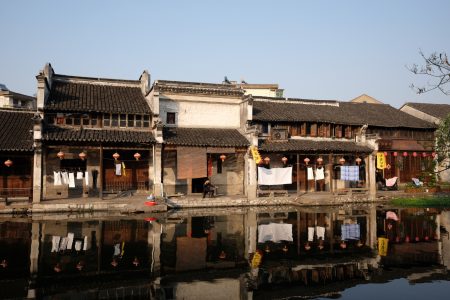
百间楼 Baijianlou houses
The old town is split into two areas. In the north is the peaceful and picturesque 百间楼 Baijianlou (literally “100 room buildings”) area. There’s a bit of a story to this, apparently a guy in the Ming dynasty wanted to get married, but the bride refused because his house wasn’t large enough to accommodate her 100 maids, so he built 100 houses for them, and they lived happily ever after.
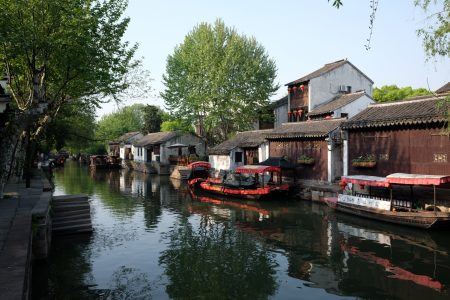
Southern part of Nanxun
The southern part of the old town is busier, with more shops and attractions, but also quite picturesque, especially in the late afternoon. One of the things I didn’t like about Wuzhen was the lack of museums and buildings that you could go inside (they were all shops or hotels). Nanxun has both! There’s a few small museums, an art gallery, a temple, and several preserved homes of famous former residents, none of which I’ve heard of. The day ticket to all the attractions costs 100元.
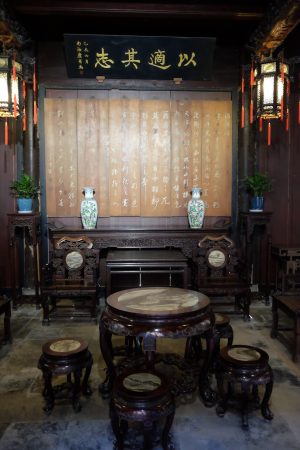
Some Qing dynasty furniture
Getting there from Hangzhou is quite straightforward, just take the long distance bus from the north bus station. Takes around two hours and costs 42元. I reckon it’s also doable as a day trip from Shanghai or Suzhou too, in fact it’s closer to those two cities. The last bus back to Hangzhou leaves at 17:30 so make sure not to miss it, and maybe buy a return ticket as soon as you arrive to be on the safe side…
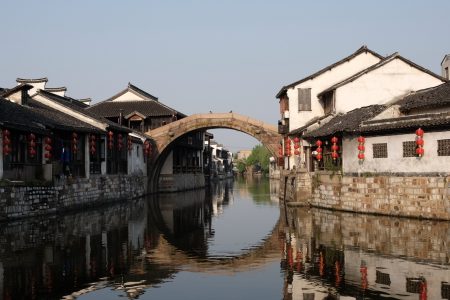
Leaving in the evening
April 19th, 2018
Last weekend I felt like doing a bit of walking to went to a village called Longjing which is just outside Hangzhou and easily accessible on the local buses. This place is quite well known for its famous green tea, which you can see growing in all the photos below.
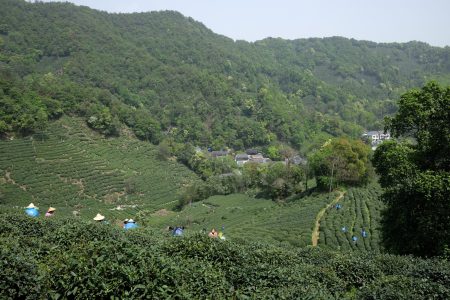
There was entirely too much walking up steps for my liking though, and my calves really hurt the next day.
April 5th, 2018
I’m doing a language course here at the moment and the school lets you take some optional courses. I’m doing one on Monday afternoons called 茶文化 “tea culture”. In common with other courses here, most of the time is learning vocabulary, but this one has tea sampling as well. And our teacher organised a field trip last Sunday! To go to the countryside to experience the 农民 life and make some tea. 农民 is a good word, it means something like “peasant” but without the negative connotations the English word has.
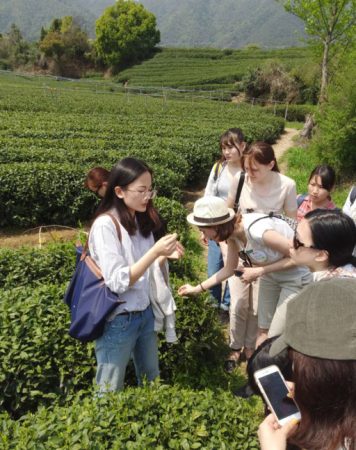
The tea growing area is rather scenic
Picking tea is great fun and very relaxing. It’s not totally mindless either as you’ve got to find the ones that have two leaves and a 芽 (“bud”?, “sprout”?, not sure) and pluck it just below the second leaf.
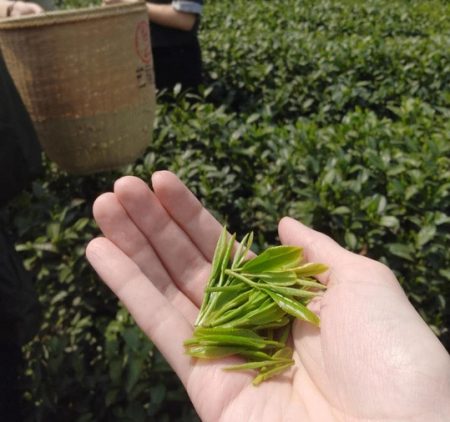
Some tea leaves I picked
After drying the leaves for a bit you have to fry it to remove all the moisture and stop whatever biological processes cause it to decay and rot. This is a surprisingly skilful activity, as I am about to find out…
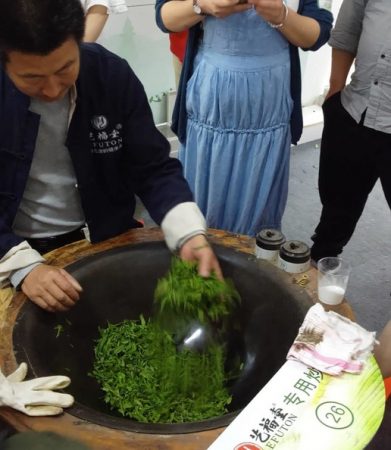
Professional tea frying technique
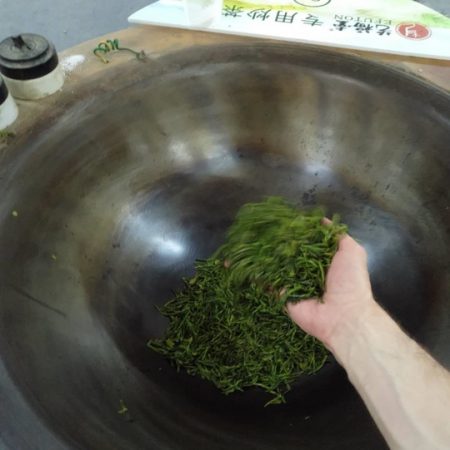
I have no idea what I’m doing
The end result is supposed to be flat and and a light green colour. Mine are curly and a very dark green verging on burnt. I also messed up and took the leaves out too early and then guy told me to put them back in again because they still had water. The wok was scalding my hand though 😟. He also told me a lot of other stuff I was doing wrong that I didn’t understand.
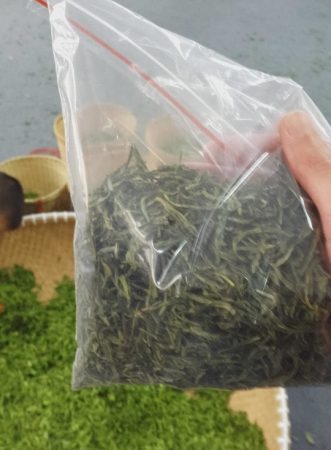
Well at least it looks like tea
It’s not pretty and has an alarming unpleasant smell but surprisingly actually makes drinkable green tea when you brew it.
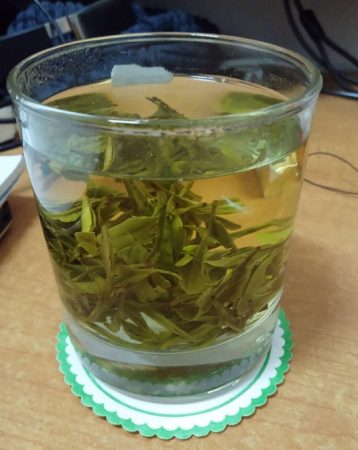
Not the best tea you’ll ever drink
April 4th, 2018
I’ve spent the last two Easters in China visiting these 古镇 “ancient towns”. In 2016 I went to Tongli near Suzhou, and this time last year I was in Anchang. It would be bad to break with tradition so this Easter weekend I visited 乌镇 Wuzhen, which is about halfway between Shanghai and where I’m living currently in Hangzhou. Wuzhen is one of the more well known of these towns, possibly because of its proximity to Shanghai which makes it a bit of a tourist hotspot. The other nearby one being 西塘 Xitang which I guess I’ll visit too at some point.
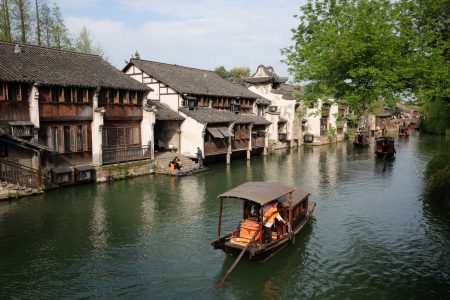
In contrast to some other places I’ve been, the “scenic area” in Wuzhen is very well preserved, almost like a historical theme park. It’s not bad, but it doesn’t feel like a town where people actually live (although, in fact, I think some do). Most of the buildings date from the late Qing dynasty, so a little over a hundred years old.
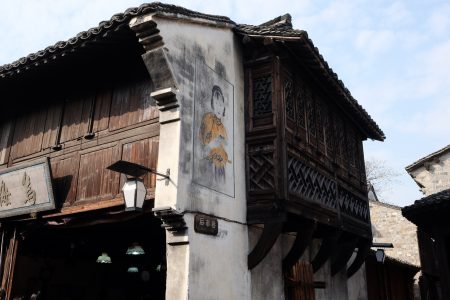
A more specific name for this type of town is 水乡 “water town”: the classical style of this area is these white-washed buildings and every other street is a canal. Wuzhen is a bit special though in that it’s situated on the Grand Canal which links Beijing and Hangzhou, and despite being dug nearly 1500 years ago is still the longest man-made waterway. On the edge of the scenic area is a pagoda you can climb up and watch the modern day water traffic.
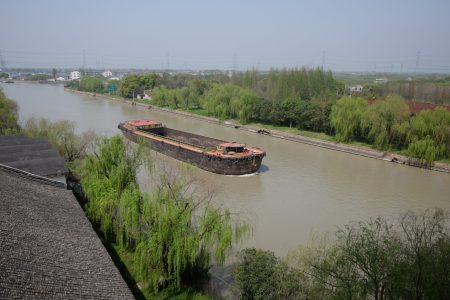
Wuzhen actually has two scenic areas, a larger “west” area and a smaller “east” area. I only visited the west area which is more than large enough to spend a day in unless you’re going to race around. I felt the day ticket price – 150元 – was a bit steep, definitely more than I’ve paid in similar towns. I believe the “east” area ticket is a bit cheaper and you can buy a combined ticket for both areas. I also felt that Wuzhen was a bit lacking in attractions compared to similar towns, beyond just looking at the scenery. E.g. in Anchang the day ticket gets you admission to several small museums, a large temple, etc. but in Wuzhen the buildings mostly just house shops, hotels, and restaurants. Though there was a small exhibit on the traditional local textile printing industry, which I rather enjoyed, and from the official website it looks like there are more museums in the eastern area. But if you’re in Zhejiang, and you just want to visit one of these towns, I think you’re better off going to Anchang. It’ll be much less crowded too.
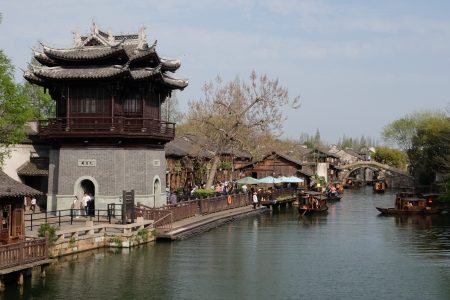
If you are also planning to travel there from Hangzhou I suggest you ignore the travel advice on the official website (which is also the route Baidu maps suggests). This involves taking the Hangzhou subway to the long-distance bus station, then taking a coach to a town called 桐乡 Tongxiang, and then transferring to the local bus to Wuzhen. This takes basically forever (3+ hours) and if you travel out the night before like I did, the direct bus 282 from Tongxiang to Wuzhen stops alarmingly early (like 5pm). The smart choice is to take the unofficial tourist coach which runs between central Hangzhou and the car park outside the scenic area in Wuzhen. I used this on the way back and it only took an hour and a half. Just pay the driver 30元 when you get on the coach. You can actually find schedules for these coaches in the Ctrip app or website (but you need the local version, not the international one).
March 23rd, 2018
After I finished class today I went to a nearby nature reserve called Xixi Wetland Park 西溪湿地. It’s a very large area of wetland to the west of Hangzhou. I didn’t have time to explore it all, but there were a lot of spring blossoms out, and a Qing-dynasty-style old street with a little pagoda and a few exhibitions. I don’t think it’s original but had a good atmosphere.
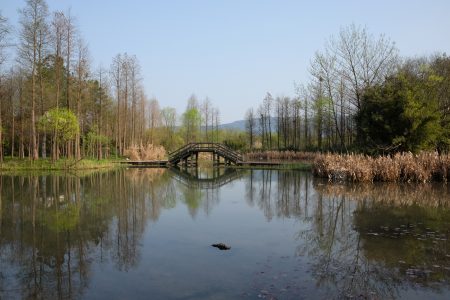
The wetland is a series of large lakes like this
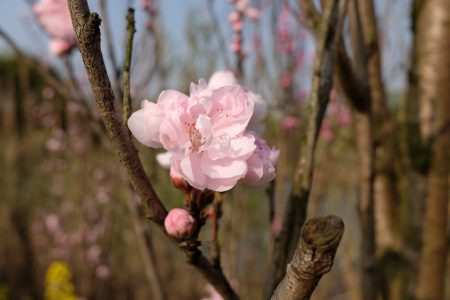
Cherry blossom (maybe)
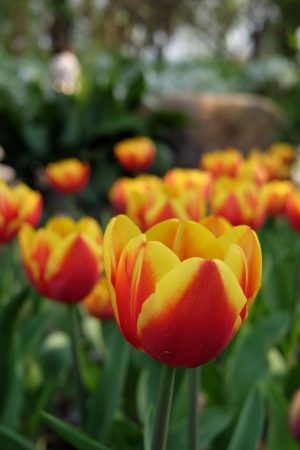
Red and yellow flower
March 18th, 2018
So I’m taking a bit of a career break at the moment and living in Hangzhou, China for a few months to study Chinese. Last weekend one of my Chinese friends came to visit so we did a few of the local tourist attractions. Actually I’ve been to Hangzhou once before back in 2016, but that time unfortunately coincided with a G20 summit and it was soo crowded so I just walked round the lake and left.
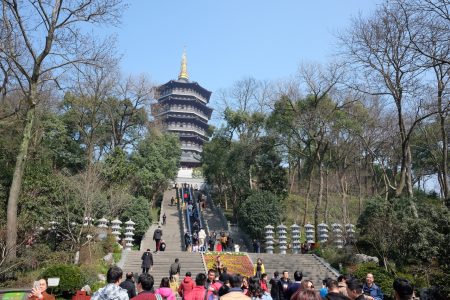
Leifang pagoda
The first stop is Leifang pagoda 雷峰塔. The original pagoda was built in 975. It was damaged and then totally collapsed in 1924, but was then later rebuilt in 2002. Underneath the new pagoda is an exhibition on the reconstruction, and you can see the remains of the originally foundations. I’m actually a big fan of rebuilding ruined historic sites, as long as it’s done in keeping with the original building, and I wish we did more of it in the UK. How much more interesting a tourist attraction would Pontefract castle be if they rebuilt it in the original style?
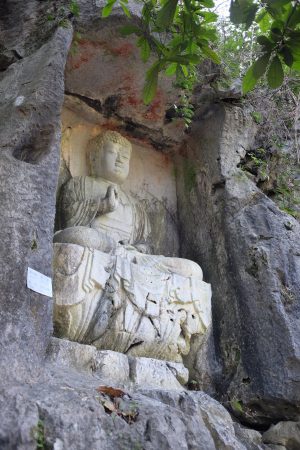
Buddhist carving
On Sunday we went to “Lingying scenic area”. I love a good “scenic area”, and this one is based around Lingyin temple 灵隐寺, one of the largest and reputedly wealthiest Buddhist temples in China. There’s a small rocky area with a number of ancient stone carvings, and lots of temple buildings, one of them containing an impressively large Buddha statue. I tried doing the praying-with-burning-incense-sticks thing and nearly set my fingers on on fire, possibly a bad omen.
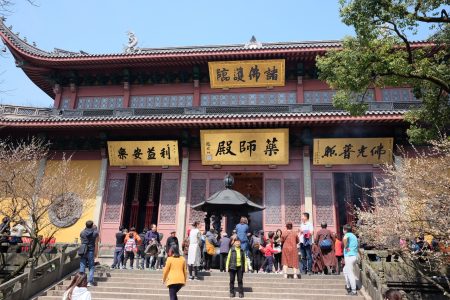
Lingyin temple
Behind the temple is Feilai peak 飞来峰, the highest mountain in the surrounding area. From the temple you can climb up some steps to the viewing platform at the top and then take the cable car back down. I love how the Chinese word for cable car 缆车 has exactly the same pronunciation as 懒车 “lazy car”. Very appropriate.























































































































































































 Posts
Posts